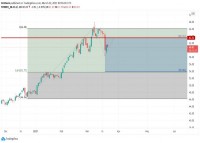By: Bart Chilton
Mr. Chilton is a commissioner at the Commodity Futures Trading Commission (CFTC) and author of Ponzimonium: How Scam Artists Are Ripping Off America
It's been 10 months since that ghoulish Halloween when we found out MF Global had imploded. What's scary is that many MF futures customers are still waiting to be made whole while MF securities investors were entitled to quick and efficient payouts by the Securities Investor Protection Corporation (SIPC), a fund not unlike the Federal Deposit Insurance Corporation, which covers customers if a bank tanks.
Why were futures customers outta luck? Because there is not a similar fund that would cover their losses when an MF Global- or, for that matter, a Peregrine Financial Group-comes along. I've proposed the "Futures Investor and Customer Protection Act" (FICPA), which would merely seek to extend the already existent SIPC protections available for securities customers to futures customers.
While I kept discussing the need for the fund, hardly anyone said "boo" about it. A few folks said they didn't like it. Perhaps it would only encourage risky behavior by firms if they knew there was insurance. That would be a good point except that such a fund would never pay out for trading losses or losses as a result of a downturn in the economy. Others suggested, without much detail, that such a fund for futures customers would be excessively expensive. I don't think so. Only twice in the history of U.S. futures trading would such a fund have been tapped. And, ask those who lost money at MF or Peregrine if
Here's how it would work:
A. Access to the FICPC Fund would be similar to the SIPC fallback fund in scope and protections and would provide futures customers with more efficient reimbursement of missing funds. The initial collection for the fund would be taken from a fee assessed on all futures commission merchants (FCMs), which would under no circumstance exceed 0.5% of the merchants' previous year gross revenue specific to futures. I recommend that revenues generated from commercial hedging or end-user customers receive a discount for the purpose of collections in order to encourage FCMs to provide these customers access to futures markets. After reaching a pre-determined target level (never to exceed $2.5 billion), FICPC could lower or suspend premium collections.
B. The FICPC would be controlled by an appointed board of directors who would determine the policies that would govern the operations of the corporation. The operational expenses of FICPC would be minimal, and would initially consist of a staff not to exceed the current 34-employee total at SIPC.
C. Futures customers impacted by the failures of their futures commission merchants would be able to file claims with a trustee. Trustees would have the power to transfer customer accounts to solvent FCMs or to liquidate them. FICPA would be limited to $250,000 in futures liquidation value and cash per customer.
It's high time such a fund should be established, before futures customers are slashed by another FCM horror story. |
By: John L. Roe
Mr. Roe is co-founder of the Commodity Customer Coalition and BRT Trading, an introducing broker based in Chicago.
Though it may be cold comfort for PFGBest's customers and brokers, Mr. Wasendorf's fraud has changed the conversation in the futures industry. The debate on how to protect customers has shifted from whether or not account insurance is necessary to what kind of mechanism would provide the greatest benefits for the lowest cost. Prior to the Peregrine collapse, I recommended that Congress authorize a customer protection fund focused on providing liquidity for the bulk transfer of customer accounts as an FCM collapses into bankruptcy. I aim to make such a protection fund a reality and I do not think ‘SIPC for futures' is the best way to get there.
The idea is to get as much customer money away from the bankruptcy process as possible without foisting huge new costs on the backs of an industry already in crisis. As it stands now, once customers are in bankruptcy things move at the speed of the Trustee, to the discretion of the Trustee and customers pay for the expenses of the Trustee. Litigation tracks on a time scale of months and years as legal costs soar. Customers face position liquidation, frozen assets and no communication on when, where or if any of their money will flow back to them. It is simply best not to be there and a relatively small protection fund would ensure that most assets do not stay there for long. I welcome the involvement of CFTC Commissioner Chilton and his proposal for a SIPC style mechanism for commodity customers. While I believe it is a good starting point for a discussion, a SIPC-based model would not address the needs of commodity customers. Despite having SIPC insurance, MF Global's securities customers had to wait months for the transfer of their accounts and assets to a new broker. Three weeks after MF Global's bankruptcy, no securities accounts had been transferred and no advances had been made from the SIPC protection fund. Securities customer accounts and assets remained frozen for some time. In fact, 25% of MF Global's securities customers were still awaiting transfer over 10 weeks later. That may be acceptable for someone who owns shares of IBM in an IRA account, but it does not work for a farmer who is short corn in a weather market. SIPC seeks to protect customer assets from within a bankruptcy proceeding. Futures customers need a mechanism which clears them from bankruptcy immediately.
The approach I recommend is similar to what commodity exchanges do to protect themselves against FCM default. Exchanges maintain several guaranty funds into which all clearing members must deposit assets. These assets can be used to meet obligations of defaulting clearing members. In the event that an insolvency exceeds the value of the guaranty fund, exchanges maintain liquidity facilities which they may use to provide temporary liquidity. The assets held by CME guaranty funds total over $4.5 billion. The CME's liquidity facility can add another $5 billion to its protection scheme. This means that the CME has at its disposal almost 7% of the total amount in segregation in the US to combat busted brokers. That is 22 times the reserve ratio the FDIC presently uses to insure over $4 trillion in bank deposits. I would say the CME is very well protected against the Corzines and Wasendorfs of the world. I propose we export this model and strip it down to protect customers from broker default. A protection fund should be housed in a non-profit entity. Its primary source of assets should be raised from transaction fees assessed per contract though, like a guaranty fund, it should maintain the ability to make assessments on its members. Customers will end up footing the bill for the cost of raising a fund no matter how assets are obtained. At least a fixed transaction fee would be fully disclosed and would not disadvantage any individual FCM. With more than 3 billion contracts traded on US exchanges last year, over $30 million could be raised annually for every $0.01 assessed per contract.
The protection fund should focus on providing liquidity to immediately transfer customer assets up to the per-account coverage limits set by the fund. Priority should be given to transferring positions on a fully margined basis to prevent a messy liquidation from harming customers and endangering markets.
Should a shortfall at an FCM exceed the fund's assets, it should have a liquidity mechanism at its disposal. This could be achieved either through the ability to borrow against its cash flow at the Fed's discount window or via the reinsurance market. The amount of customer money the fund protects should be tied to the amount of assets it controls, so coverage grows with a few years of good behavior behind us. The fund should have a cap based on a reserve ratio of 1% to 1.5% of the total held in segregation in the industry, so that it reduces or stops assessing fees when the cap is reached.
It is important that the protection fund be subrogated to customer claims so that it can recoup advances made to customers of a failed FCM. This is important to help remove the moral hazard inherent with any type of insurance. The fund should be able to penalize bad actors civilly to ensure it does not pervert financial incentives for FCM executives.
The question then becomes how to make this fund a reality. Can this be done within the industry or does it require Congressional authority? I think it can be achieved either way and the Commodity Customer Coalition has committed to studying the issue with industry leaders to determine the best way forward.
Approaching this without involving Congress would necessitate creating a protection fund in a mutual corporation owned by the exchanges and FCMs. This company would be similar to a mutual insurance company, acting like a private utility for managing the protection fund. The owners would agree on assessments for membership, as well as a transaction fee to charge customers for coverage benefits. The obvious advantage to this approach is that it does not require the proverbial act of Congress to get it done. It would, however, require extensive cooperation amongst FCMs and exchanges. The legislative approach would involve obtaining Congressional authority to create a non-profit entity, possibly a Government owned corporation (like SIPC), to act as a customer protection mechanism. This route may be longer and more contentious, but Congress seems very willing to consider such a proposal. We will have to wait out the clock on this year's election and seek the assistance of the 113th Congress.
Ultimately, such a protection fund must work hand in hand with new reforms designed to prevent or minimize the impact of an FCM insolvency. While I believe insurance is the most important component of a policy response to FCM bankruptcies, it is not a silver bullet. Alternative methods of segregation, including the tri-party and quad-party models which are in various stages of readiness, will add another important layer of protection for customers which are not reliant on the efficacy of regulators or the morals of CEOs. Combined with an insurance mechanism, third party segregation and other reforms can restore confidence amongst the industry and mitigate the impact of future FCM failures. |





 RSS
RSS











